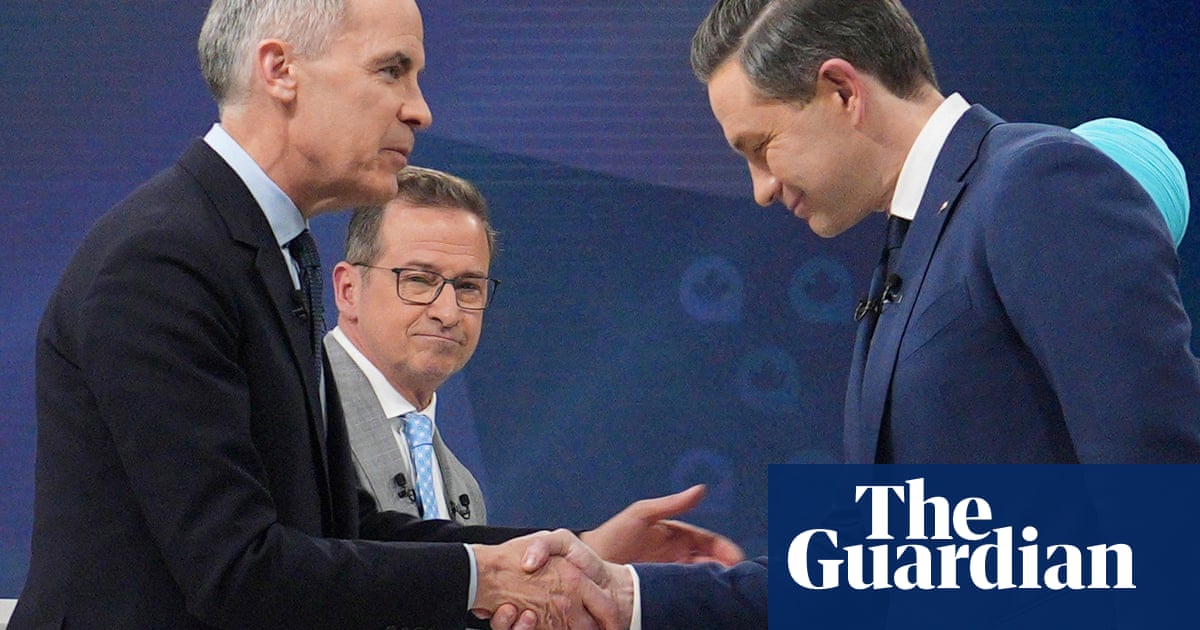Photo credit: www.theguardian.com
Canada’s Political Landscape Shifts as Election Approaches
In the lead-up to Canada’s impending election, Prime Minister Mark Carney underscored a pivotal issue: the ability to effectively engage with U.S. President Donald Trump. This statement came amidst a dynamic French-language leaders’ debate against Conservative leader Pierre Poilievre, where the exchange highlighted contrasting visions for the country’s future.
During the debate, Poilievre criticized the current Liberal administration, asserting that Canada requires a transformational shift after ten years of Liberal governance. In a rebuttal, Carney emphasized that neither he nor Poilievre is a reflection of former Prime Minister Justin Trudeau. “In this election, the question is who is going to face Mr. Trump,” Carney articulated, reiterating his stance on national leadership.
The encounter marked the first direct confrontation between the two leaders since Carney assumed the Liberal leadership in March, following a leadership race that unfolded amidst challenges for the party due to Trump’s aggressive trade policies and rhetoric suggesting Canada could become the United States’ 51st state. These developments have sparked a rise in Canadian nationalism, positively influencing Carney’s approval ratings as the election date approaches on April 28.
Held in Montreal—Canada’s most populous city and a pivotal zone in predominantly French-speaking Quebec—the debate highlighted the significance of the province, which holds 78 out of 343 seats in the House of Commons. Poilievre’s strategy focuses on framing the election as a referendum on Trudeau’s legacy, especially as rising costs of living and surging immigration have tarnished the former Prime Minister’s popularity.
Carney’s rise to leadership follows a turbulent time for the Liberals, where a prominent reshuffle occurred after Trudeau faced widespread criticism and eventually stepped down. Carney’s comments post-debate marked a clear departure from his predecessor’s approach, as he stated, “One of the differences… is that I put much more emphasis on the economy, on growing the economy.” He stressed the importance of maintaining a relentless focus on economic growth in light of the ongoing crisis.
The debate also saw responses from Yves-François Blanche, leader of the Bloc Québécois. His party, which is beginning to lose traction to Carney’s Liberals, echoed the Conservative sentiment for change, arguing that merely changing leaders does not equate to substantial political transformation.
Public sentiment, however, has seen a notable shift. A mid-January poll indicated that the Liberals were trailing significantly behind the Conservatives, but a recent Nanos poll shows the Liberals now leading by eight percentage points, demonstrating a dramatic reevaluation among voters. The January figures indicated a 47% to 20% lead for the Conservatives, with a margin of error of 3.1 points, while the latest poll had a margin of 2.7 points.
The setup for the debate was adjusted to avoid a clash with a Montreal Canadiens hockey game, reflecting the integration of sports culture into Canadian political life. This adjustment follows historical precedents, such as in the 2011 election when a debate was postponed to accommodate hockey fans.
Looking ahead, the upcoming English-language debate scheduled for Thursday evening will further shape the political discourse in a nation poised for a crucial electoral choice.
With contributions from Associated Press and Reuters
Source
www.theguardian.com

